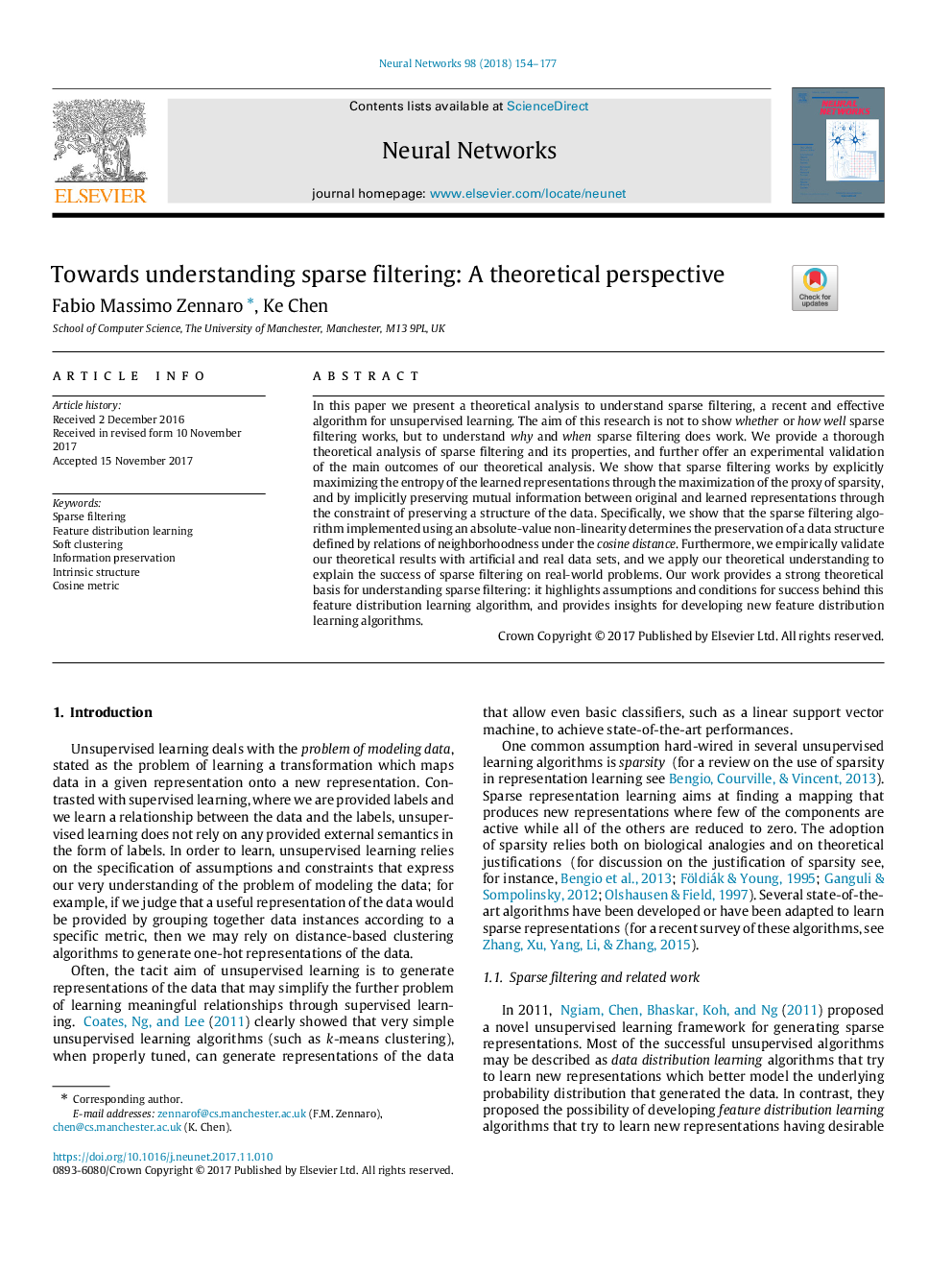| Article ID | Journal | Published Year | Pages | File Type |
|---|---|---|---|---|
| 6863103 | Neural Networks | 2018 | 24 Pages |
Abstract
In this paper we present a theoretical analysis to understand sparse filtering, a recent and effective algorithm for unsupervised learning. The aim of this research is not to show whether or how well sparse filtering works, but to understand why and when sparse filtering does work. We provide a thorough theoretical analysis of sparse filtering and its properties, and further offer an experimental validation of the main outcomes of our theoretical analysis. We show that sparse filtering works by explicitly maximizing the entropy of the learned representations through the maximization of the proxy of sparsity, and by implicitly preserving mutual information between original and learned representations through the constraint of preserving a structure of the data. Specifically, we show that the sparse filtering algorithm implemented using an absolute-value non-linearity determines the preservation of a data structure defined by relations of neighborhoodness under the cosine distance. Furthermore, we empirically validate our theoretical results with artificial and real data sets, and we apply our theoretical understanding to explain the success of sparse filtering on real-world problems. Our work provides a strong theoretical basis for understanding sparse filtering: it highlights assumptions and conditions for success behind this feature distribution learning algorithm, and provides insights for developing new feature distribution learning algorithms.
Keywords
Related Topics
Physical Sciences and Engineering
Computer Science
Artificial Intelligence
Authors
Fabio Massimo Zennaro, Ke Chen,
